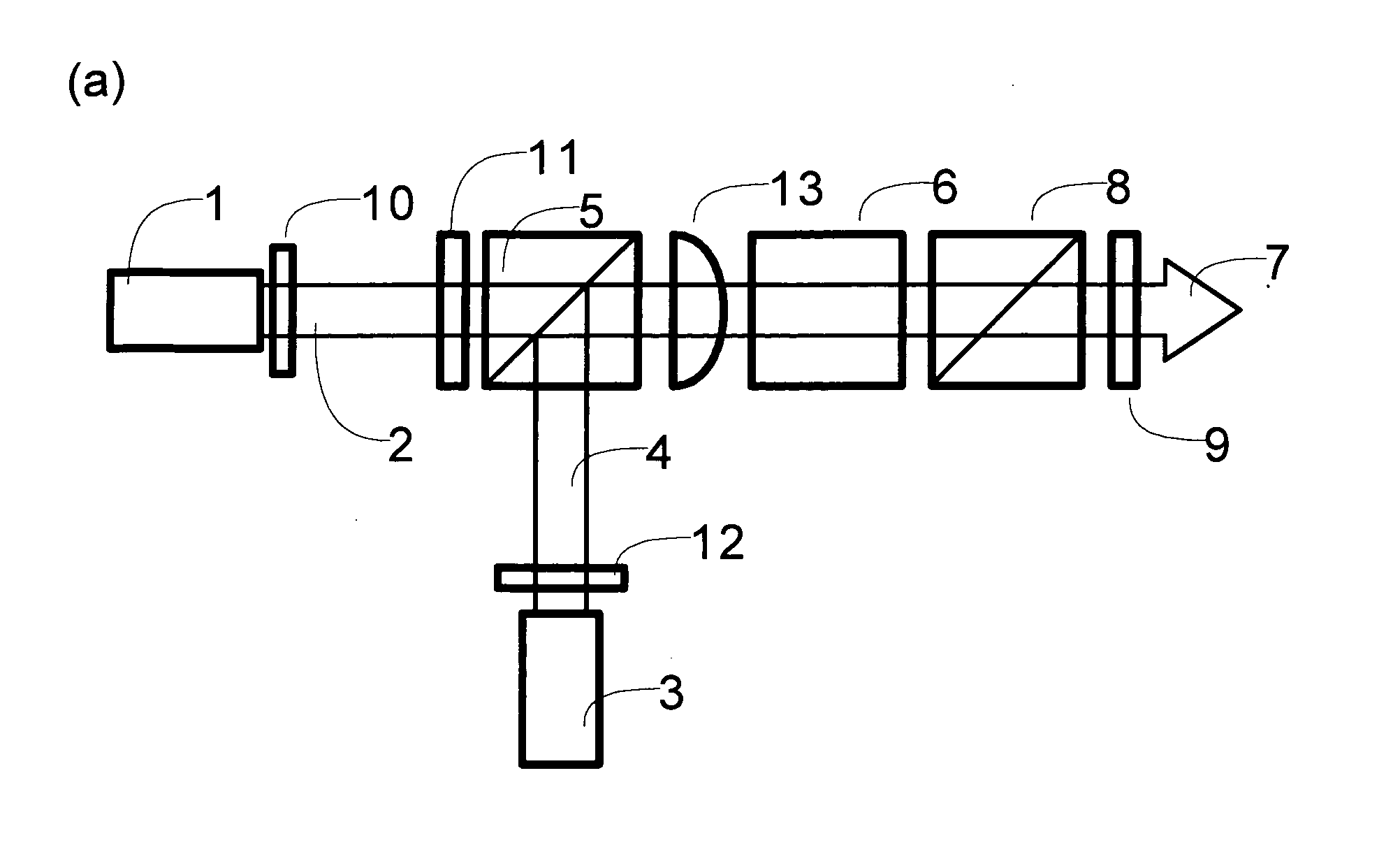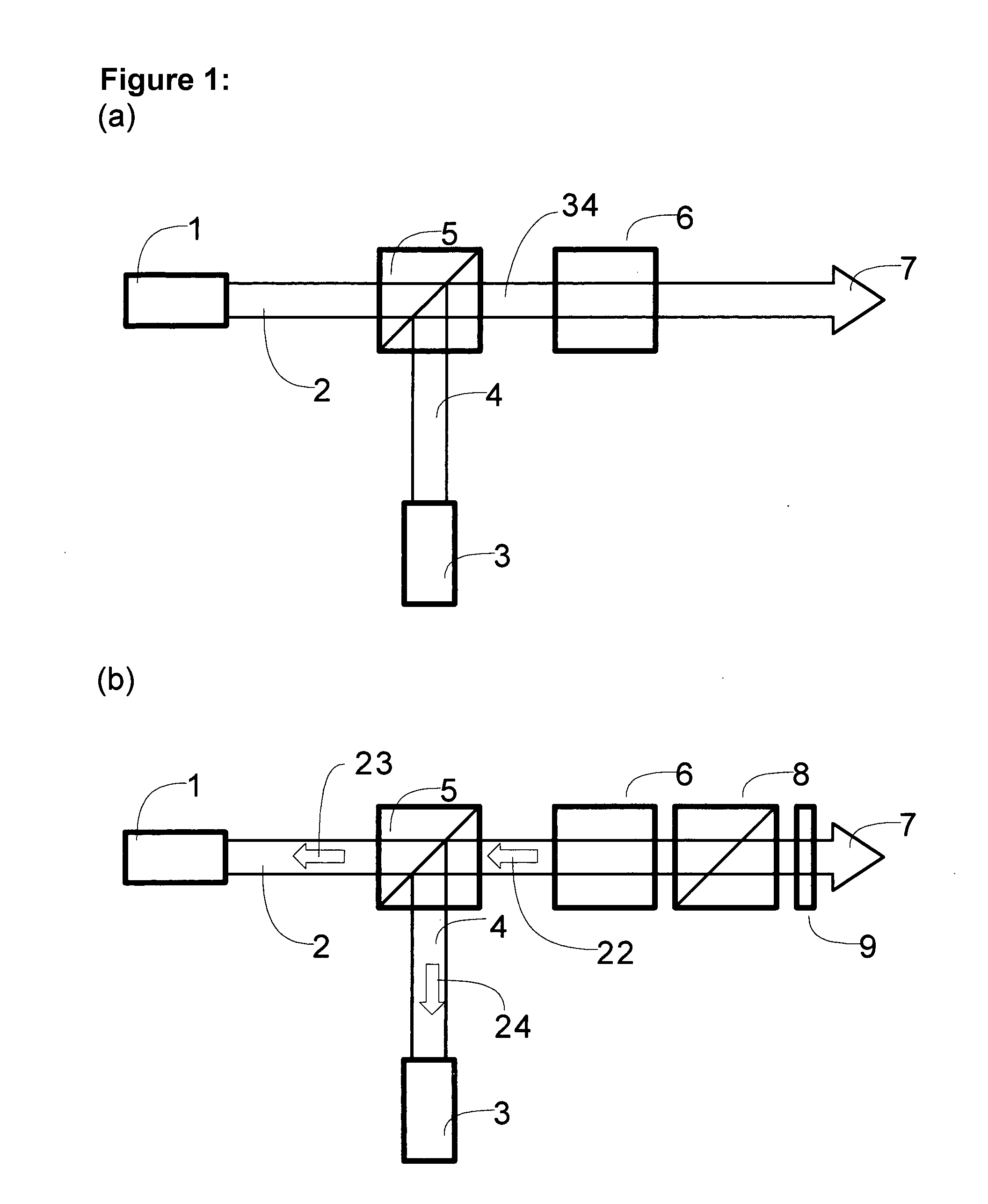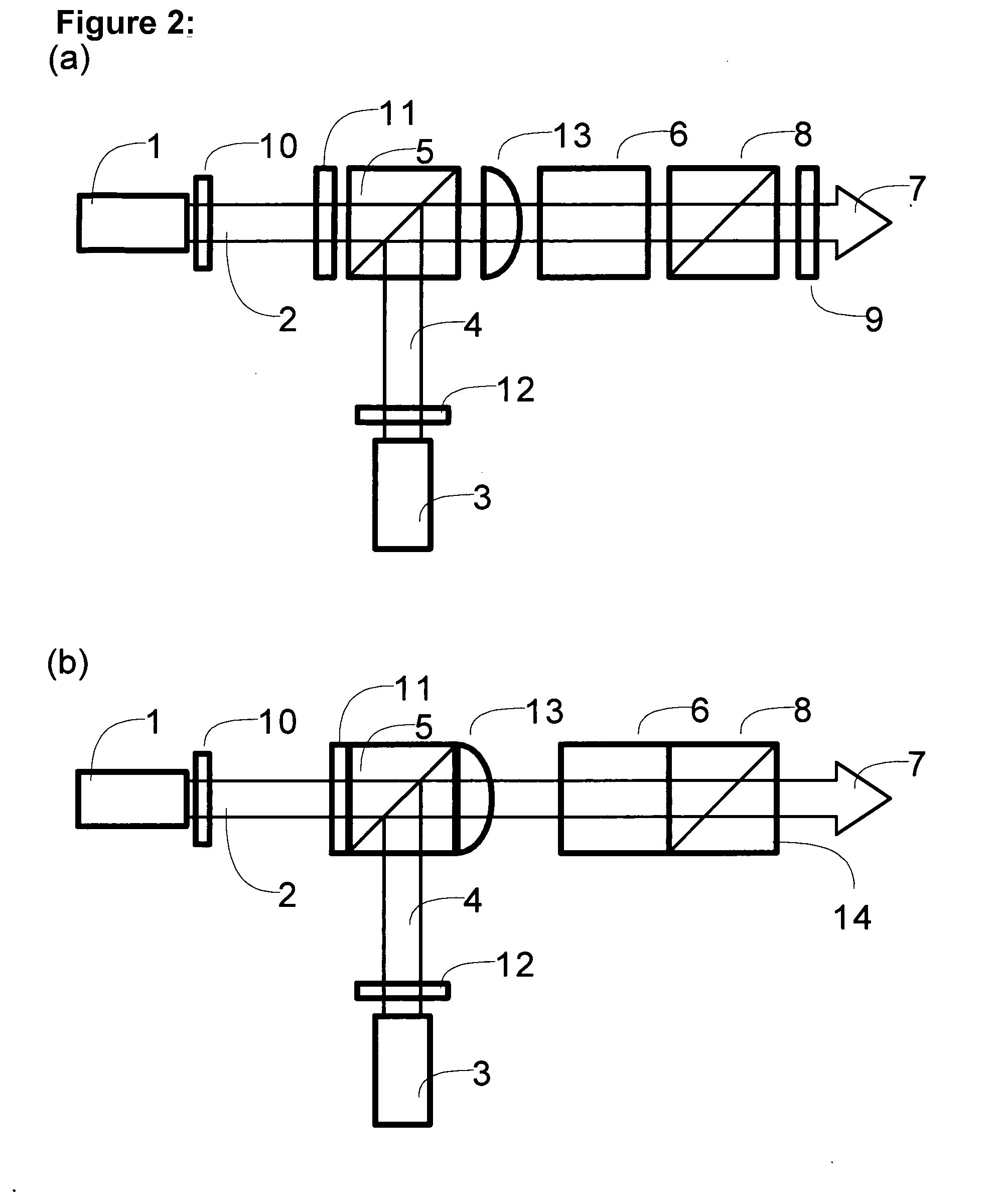Polarization coupler
a polarization coupler and laser technology, applied in the direction of laser optical resonator construction, lasers, instruments, etc., can solve the problems of deterioration of others, power densities which would destroy components, and output power or power density still too low for many exciting applications, so as to reduce the efficiency of lasing lines, reduce the efficiency of coupling, and reduce the effect of power density
- Summary
- Abstract
- Description
- Claims
- Application Information
AI Technical Summary
Benefits of technology
Problems solved by technology
Method used
Image
Examples
Embodiment Construction
A principal depiction of the assembly is shown in FIG. 1 in sub-figure (a). According to this Figure two beam sources (1) and (3) each emit light (2) and (4) respectively having different wavelengths. This light is preferably orthogonal polarized. The two beams are superimposed by a polarizing beam splitter (5) into a common beam (34). This beam incidents onto a birefringent crystal (6). The birefringence is dispersive which means dependent on wavelength. The optical axis of the birefringent crystal shall be aligned under an inclination of 45° with respect to the polarization of the two beams. This alignment is preferable for retarders and quite common because then the dispersively birefringent crystal acts as a wave plate and directly influences the orientation of polarization of both beam sources. Thanks to the dispersion it is possible to choose such a thickness of the crystal that it acts as a half-wave plate for one wavelength and phase-neutral for the other. Concretely the pha...
PUM
 Login to View More
Login to View More Abstract
Description
Claims
Application Information
 Login to View More
Login to View More - R&D
- Intellectual Property
- Life Sciences
- Materials
- Tech Scout
- Unparalleled Data Quality
- Higher Quality Content
- 60% Fewer Hallucinations
Browse by: Latest US Patents, China's latest patents, Technical Efficacy Thesaurus, Application Domain, Technology Topic, Popular Technical Reports.
© 2025 PatSnap. All rights reserved.Legal|Privacy policy|Modern Slavery Act Transparency Statement|Sitemap|About US| Contact US: help@patsnap.com



